Why does the USA spend billions of dollars each year to maintain military forces in the Western Pacific? The Soviet Union no longer exists. Russia has no desire for war and lacks the military power to intervene in any major conflict, except with nuclear weapons. South Korea is five times more powerful than North Korea. China has made peace with Taiwan, which is now a major trading partner and is cutting 20% of its armed forces. China is surrounded by potentially hostile nations that it fought in past wars: Russia, Japan, Vietnam, Taiwan, and India, with the USA lurking in the background. It is growing rapidly and has no desire to commit economic suicide with a military conflict.
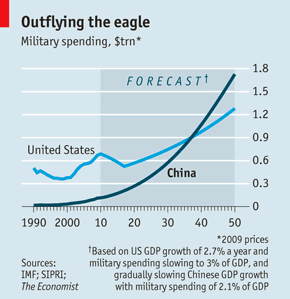 In
2012, the "Economist" featured a cover
story about China's rising military power, revealing that its
military spending will surpass the USA's around 2038. China's increased military
spending
is understandable since its GDP will surpass the USA in 2018, but the article does not explain how
a stagnant American
economy can double its military spending, after doubling it already since 2002. Given that American forces
are spread around the globe, China's air and naval power in
the Western Pacific is already greater than the USA. Should a war with
China unexpectedly erupt, American military planners must focus on defense
until more forces arrive from the USA.
In
2012, the "Economist" featured a cover
story about China's rising military power, revealing that its
military spending will surpass the USA's around 2038. China's increased military
spending
is understandable since its GDP will surpass the USA in 2018, but the article does not explain how
a stagnant American
economy can double its military spending, after doubling it already since 2002. Given that American forces
are spread around the globe, China's air and naval power in
the Western Pacific is already greater than the USA. Should a war with
China unexpectedly erupt, American military planners must focus on defense
until more forces arrive from the USA.
Fortunately, the USA has powerful allies in the region, and China is not keen on taking over the world, at least not overtly. China will gradually exert its influence for economic reasons, hopefully absorbing Taiwan as it did Hong Kong. It will employ "soft power" to gain puppet "ally" control of Myanmar, and perhaps Singapore, the Philippines, and Indonesia to secure access to raw materials and sea routes. Chinese immigrants from decades past already control half the corporations in those nations today. The USA must play its own diplomatic soft power game to counter these efforts.
A soft power game is currently in play and America's military leaders have ignored the consequences. China quietly supports a growing movement on the Japanese island of Okinawa to demilitarize their island. After World War II, the USA retained Okinawa as a military reservation with dozens of bases. It thwarted desires for independence by Okinawans when it gave it back to Japan in 1972, with an understanding that a large American military presence would remain. Okinawa had been the independent Ryukyu Kingdom for centuries, maintaining good relations with both China and Japan. As Japan militarized, it invaded in 1872 and Okinawans suffered from their occupation, especially during the American invasion in 1945, which killed a quarter of the Okinawan population. Okinawans want to live in peace and do not want to remain a pawn on the superpower chessboard.
Another Phony Agreement
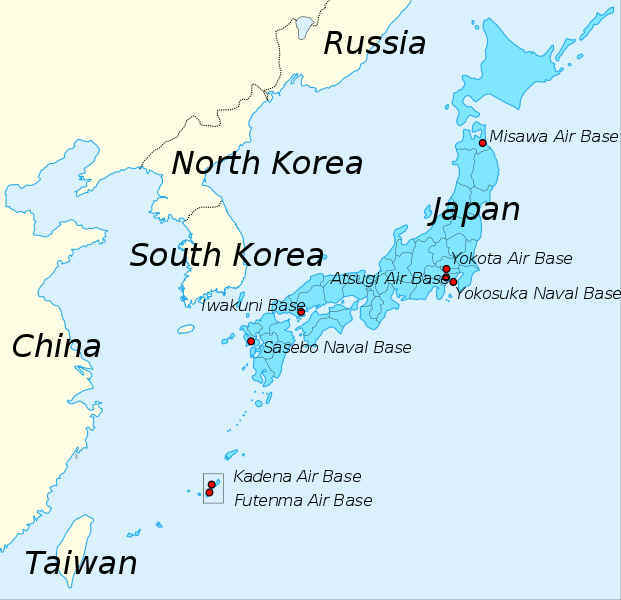 Okinawans resent this foreign occupation and have been
demanding a reduction in the size of the American military presence for decades. Numerous
agreements since the Vietnam war have resulted in just a few concessions. Some 28,000 American
GIs and their 22,000 family members live on this small island today, along with thousands of American
civilian workers. For
example, the Department of Defense Okinawa
School district runs two high schools, three middle schools, and eight
elementary schools!
Okinawans resent this foreign occupation and have been
demanding a reduction in the size of the American military presence for decades. Numerous
agreements since the Vietnam war have resulted in just a few concessions. Some 28,000 American
GIs and their 22,000 family members live on this small island today, along with thousands of American
civilian workers. For
example, the Department of Defense Okinawa
School district runs two high schools, three middle schools, and eight
elementary schools!
Yet another agreement to reduce the American presence was recently signed, promising to transfer 9000 Marines elsewhere in the Pacific. Key American Senators James Webb, John McCain, and Carl Levin blocked funding for this agreement, because they know it's bogus. A similar agreement was signed in 2003, and both failed to address the key demand, closure of the Marine Corps airbase at Futenma (below), located in the middle of a city surrounded by multi-story buildings.
This is a horrible location for Marine Corps helicopters. They have no protective shelters and anyone can observe activities on the airbase from nearby hills and buildings. Enemy agents can easily direct precision guided missiles at targets on the airbase. Enemy commandos may infiltrate via fishing boats, submarines, or parachute from small aircraft. They can storm onto the base and easily destroy most aircraft. During the Vietnam war, the Marine Corps airfield on Marble Mountain was defended by infantry, yet Viet Cong sappers infiltrated the base and destroyed 19 helicopters and damaged 35 (11 of them severely). Moreover, there is no strategic rationale for basing dozens of helicopters on Okinawa, as explained here: The Okinawa Solution.
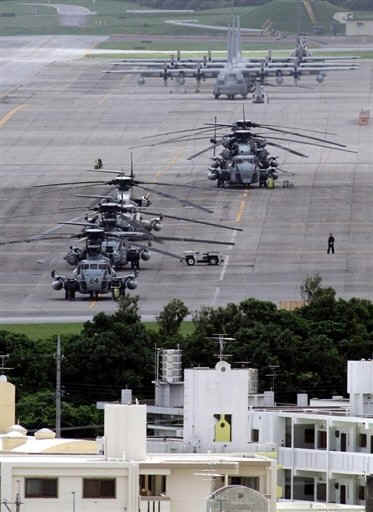 These
American senators are angry at the attitude of Marine Corps Generals. Last year, the Senate directed
the Pentagon to fund an independent
review of basing options in the Pacific. This directive was ignored, while Generals negotiated a vague
agreement pledging to move 9000 Marines
elsewhere
once Congress provides $5.5 billion, which congressional experts consider
an extremely low figure. Last year, the GAO
estimated the idea could cost $24 billion. However, no analysis can be done because Generals refuse to provide a detailed plan as to which units would move and
what construction projects are required.
These
American senators are angry at the attitude of Marine Corps Generals. Last year, the Senate directed
the Pentagon to fund an independent
review of basing options in the Pacific. This directive was ignored, while Generals negotiated a vague
agreement pledging to move 9000 Marines
elsewhere
once Congress provides $5.5 billion, which congressional experts consider
an extremely low figure. Last year, the GAO
estimated the idea could cost $24 billion. However, no analysis can be done because Generals refuse to provide a detailed plan as to which units would move and
what construction projects are required.
Part of the reason was revealed when it was quietly announced that the agreement to move 9000 Marines off Okinawa will only remove 5000. Around 15,000 Marines have been based on Okinawa this past decade, although facilities can accommodate up to 19,000. Generals will employ a shell game over the next two years by increasing the number of Marines to 19,000 before beginning the promised reduction of 9000, leaving 10,000 Marines, or 4000 more than the recent agreement implied. The agreement has another loophole. There are no family housing or schools at the small Marine Futenma airbase, so nearby Camps Kinser and Foster cannot close as the recent agreement promised. Meanwhile, Marine Generals publicly demanded that Japan provide $312 million to upgrade and repair Futenma over the next eight years!
The senators want the small 1188-acre Futenma airbase closed with no replacement to resolve the key dispute, and some Marine Corps aircraft moved up the road to 11,210-acre Kadena, the largest U.S. Air Force airbase in the Pacific. Marine aircraft often fly to Kadena to load bombs and bullets because Futenma doesn't even have a munitions storage facility. Given that our military budget is now frozen, and likely to decline, senators are not keen on appropriating billions of dollars toward an undefined plan that does nothing to improve our defense posture in the Western Pacific.
The Okinawa Solution provides a specific plan to remove half the Marines from Okinawa within four years, where they are not wanted nor needed, at zero cost! A key part is recognizing that only 4000 Marines on Okinawa are combat troops, and that force is far too small to intervene anywhere in the Western Pacific. It recommends slashing headquarters and base overhead on Okinawa, shifting half the deployed Marine combat forces to U.S. Navy bases in the Mediterranean/Persian Gulf regions, moving some back to Hawaii, closing Futenma, and moving a dozen Marine helicopters to nearby Kadena to support island defense.
American Hubris
There is a chance that Chinese soft power backed by growing hard power may escalate into a major war. No one wants this to occur as it would be disastrous for all. Yet history proves this may happen, as World War I demonstrated. So the reason the USA devotes billions of dollars to maintain military forces in the Western Pacific is to back allied states and counter Chinese influence.
Unfortunately, American deployments to the Western Pacific are frozen in Cold War era assumptions of absolute American air and naval superiority. Given China's growing power and America's economic stagnation, the U.S. military must adopt a defensive posture in the Western Pacific. The Pentagon recently announced that it will shift naval forces to the Pacific as part of a highly publicized "Asian pivot." The Cold War 50-50 allotment is to adjust to 60% of forces in the Pacific and 40% in the Atlantic.
However, rising procurement and manpower costs will force a continued reduction in American combat forces, even if budgets remain frozen at today's post-World War II highs. This "Asia pivot" means that American force structure in the Pacific will remain unchanged, while those at Atlantic bases decline some 20%. Meanwhile, China's military power is expected to quadruple with technology equal to that of the USA.
The U.S. military must stop pretending that our forces in the Western Pacific are capable of major offensive operations and organize them to defend Pacific island chains. Many Generals also assume that our close allies in the Pacific would automatically join the USA in a war. However, Taiwan and South Korea are major trading partners with China and reliant on shipping lines for trade and food. Given their close proximity to China, it would be foolish to join in a war unless China threatened them directly, especially if the USA might lose. If war erupts, Taiwan and South Korea would be very receptive to Chinese suggestions that they declare neutrality. Thailand, Singapore, and the Philippines may also opt out of World War III. Japan has a much closer defense relationship with the USA, and knows that it must back the Americans to counter Chinese dominance in the region, even over petty disputes, like those it already has with China. However, relations with the Japanese have been damaged by a stubborn and irrational refusal to reduce American forces on Okinawa.
Serious information about growing Chinese military power can be read at the great website: Airpower Australia, which includes nice photos and detailed maps like the one pictured below depicting the range of Chinese airpower. Should war suddenly break out, China can instantly devastate huge U.S. Air Force Kadena airbase with hundreds of precision missiles fired from land, aircraft, ships, and submarines, easily overwhelming the island's limited air defenses. The runways at Kadena and Japan's nearby Naha airbase would be cratered, and aircraft hangers hit as hundreds of Chinese fighters race toward Okinawa to destroy all surviving military targets. American and Japanese military bases on mainland Japan would also suffer from attacks, but far fewer since most of Japan can only be hit by large land-based ballistic missiles and is defended by an extensive overlapping air defense system.
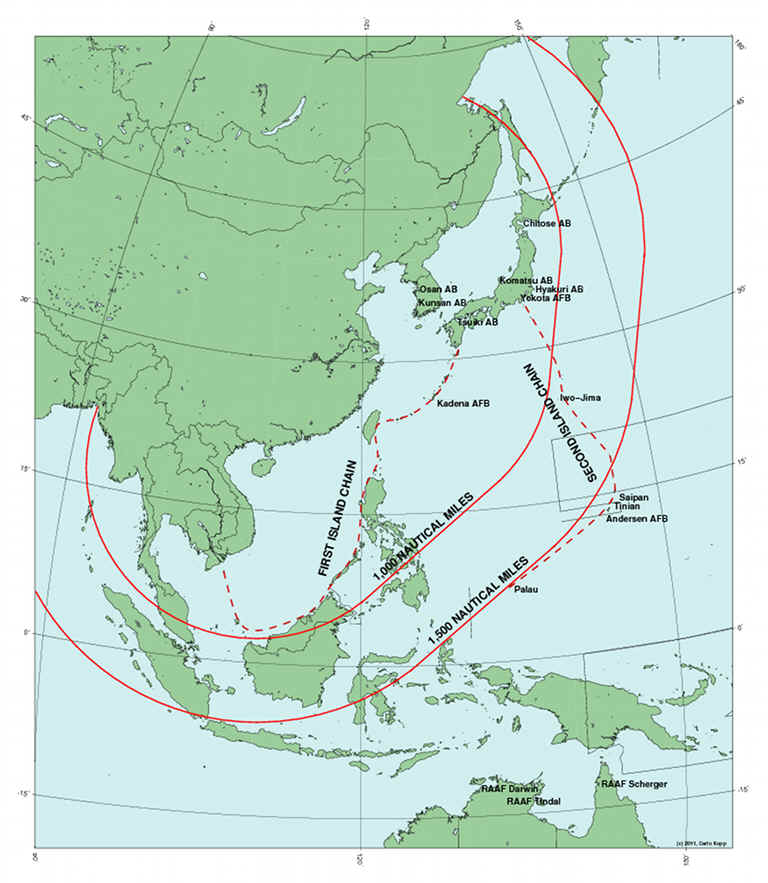
Modern Chinese fighter-bombers have a range of 1000-1500 nautical miles, depending on bomb load, altitude flown, and maneuvering required over the objective areas. China has large bombers and aerial tankers that can greatly extend strike range, but they are slower and much easier to detect and counter. American bases on mainland Japan are also vulnerable to attack, but they have the support of the modern, powerful Japanese Air Defense Force with over 400 fighter aircraft backed by 100 American fighters.
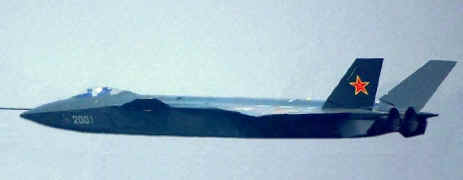 The Chinese can easily devastate Okinawa, and the American
naval base at Sasebo on
the southern end of mainland Japan within an hour. Most of the 72 fighter aircraft and
32 support aircraft would be destroyed on the ground at Kadena and Naha. Perhaps
two dozen American and Japanese F-15 fighters would manage to take-off from
damaged runways,
only to face destruction as hundreds of Chinese fighters arrive. The technologic and training advantages
of American fighters cannot overcome
massive numerical superiority. A 2008
Rand study evaluated such a conflict, and concluded that even if the
USA had weeks to triple its air combat power on Okinawa and Guam, China would
easily win, and this based on China's airpower in 2008!
The Chinese can easily devastate Okinawa, and the American
naval base at Sasebo on
the southern end of mainland Japan within an hour. Most of the 72 fighter aircraft and
32 support aircraft would be destroyed on the ground at Kadena and Naha. Perhaps
two dozen American and Japanese F-15 fighters would manage to take-off from
damaged runways,
only to face destruction as hundreds of Chinese fighters arrive. The technologic and training advantages
of American fighters cannot overcome
massive numerical superiority. A 2008
Rand study evaluated such a conflict, and concluded that even if the
USA had weeks to triple its air combat power on Okinawa and Guam, China would
easily win, and this based on China's airpower in 2008!
The Chinese would sink every American ship in the Western Pacific that it could find, including any aircraft carriers that foolishly enter China's aerial kill zone. Should fighting continue for more than a month, China would attempt complex, long-range raids against Guam and Tokyo. Given this obvious strategy, the USA must begin downsizing its presence on Okinawa, removing non-fighter aircraft and most military families.
History May Repeat Itself
At the beginning of our last major war, the USA had aircraft permanently based within easy striking range of a potential enemy. Here is a short account of what a happened to those aircraft on December 10, 1941 at Clark Field in the Philippines.
"At 12:35 P.M. a tight group of twenty-seven Japanese aircraft making a low moaning sound appeared suddenly from the Zambales Mountains and startled the Americans at their noon repast. American pilots scrambled to their planes, but it was too late -- the bombs were already falling. And the ground shook from the shock of the attack.
Some of the startled soldiers and airmen took potshots at the attackers with Springfield rifles, antiquated firearms from an earlier war. In a matter of minutes the diving, screaming attackers reduced the squadrons of planes at Clark to seven aircraft--seven!
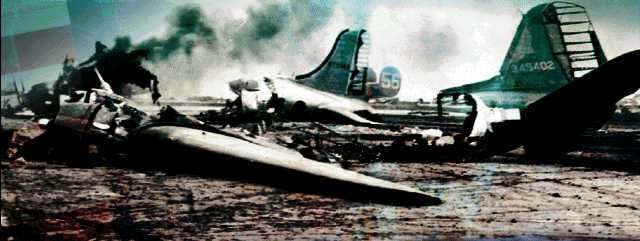 A second wave of twenty-six Zeros followed, machine-gunning the field. By
1:37 P.M. the raid was over, and the once beautiful and tranquil Fort
Stotsenberg and Clark Field were littered with shrapnel and thousands of pieces
of mangled, twisted and burning aircraft. The oil dump was ablaze. The enlisted
men's barracks, officers quarters, aircraft hangars and machine shops were
leveled. A flash fire was raging in the tall grass around the perimeter. And
everywhere, everywhere, lay the wounded, and the dead."
A second wave of twenty-six Zeros followed, machine-gunning the field. By
1:37 P.M. the raid was over, and the once beautiful and tranquil Fort
Stotsenberg and Clark Field were littered with shrapnel and thousands of pieces
of mangled, twisted and burning aircraft. The oil dump was ablaze. The enlisted
men's barracks, officers quarters, aircraft hangars and machine shops were
leveled. A flash fire was raging in the tall grass around the perimeter. And
everywhere, everywhere, lay the wounded, and the dead."
The attack on Clark occurred two days after Pearl Harbor. Our Generals knew we were at war, yet aircrews were caught by surprise. Those Japanese fighters flew from bases on Formosa, a longer raid than required for Chinese jet fighters to strike Okinawa! We have radar warning today, but China has missiles that can hit our bases within minutes. They would be quickly followed by hundreds of Chinese attack jets flying twice as fast as Japanese Zeros. Then we would face the crisis of over 30,000 American civilians and family members stranded on Okinawa. Over 5000 American civilians were captured and thousands killed in the Philippines in 1942 as American forces fled in disarray from indefensible forward military bases.
Should war erupt with China, our bases on Okinawa would be bombed and prove useless after just a couple hours. Yet we keep a squadron of 15 large KC-135 tankers parked at Kadena. It is obvious that we should move that squadron further away, along with their family members. There are also a couple large E-3 AWACs radar aircraft and several Air Force C-130s at Kadena, all parked in the open in neat rows. (below)
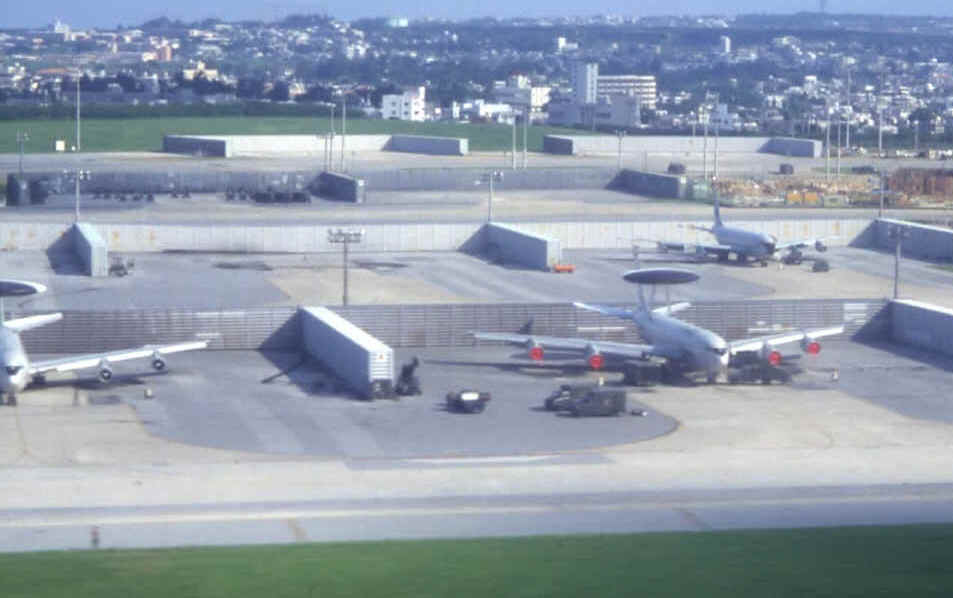
Should war break out with China, these aircraft would be lucky to escape, and then must operate from less familiar airbases that may lack necessary equipment. All their ground support equipment would have been abandoned at Kadena, along with the squadron's administrative computers and some of the staff. Families would be left behind along with dozens of personnel who refused orders to leave their families. For those that escape, the main focus of aircrews would be daring plans to return and land at Kadena's damaged runway to evacuate families without getting shot down by enemy fighters.
Even if one assumes our aircraft are vastly superior, studies have shown that our limited number of high-tech fighters flying from a few bases in the Western Pacific would be overwhelmed by thousands of Chinese fighters flying from dozens of bases. However, the U.S. must support Japan's territory around its southern islands with fighters based at Kadena, supporting Japan's F-15s based nearby at Naha. Nevertheless, the large Air Force support aircraft at Kadena are sitting ducks and not essential for island defense (such as the KC-135 tankers pictured at Kadena below). They should move to airbases much further from Chinese airpower. This will open space for a dozen Marine aircraft from closing Futenma to assist with island defense and the search and rescue of downed pilots.

There is no reason to keep the Air Force C-130 special operations aircraft at Kadena, or the Army Special Forces battalion at nearby Torii Station. They are valuable in bolstering the knowledge and morale of America's weaker allies in the region, like the Philippines and Thailand, but it makes no sense to base them on Okinawa with their families, where training is limited and all would become stranded during wartime. They should move to Hawaii, Guam, mainland Japan or to Campbell Barracks near Perth in Western Australia, home of Australia's Special Forces. This is beyond the range of most Chinese weaponry and would greatly enhance allied cooperation in countering Chinese efforts in Southeast Asia.
It would be best to remove all families and permanent aircraft squadrons from Kadena, keeping it as a forward operating base. This is how the U.S. Navy uses Kadena to maintain reconnaissance aircraft in the region, which are home-based in Hawaii and Washington state and deploy for several months. The U.S. Air Force could operate in the same manner, deploying fighter squadrons from the USA for six-month rotations as part of an Air Expeditionary Force.
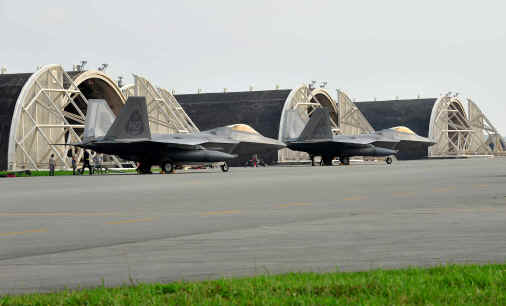 Otherwise, the
Air Force must change most tours to Kadena to one-year unaccompanied.
Either option would remove most Air Force families and American civilians
from Kadena to increase combat readiness and reduce tensions with Okinawans.
This reduction also solves the problem of closing Marine Corps camps south of Kadena,
since it opens Kadena schools and housing to Marine families displaced by those
promised closures. Keep in mind this is a modest proposal, since future developments may
require the sudden evacuation of all U.S. military families from Okinawa. If
war seems inevitable, Generals may even pull the American and Japanese F-15s
back to the safety of Guam and Iwo Jima, allowing them battle-space to properly
defend Okinawa in coordination with fighters from mainland Japan.
Otherwise, the
Air Force must change most tours to Kadena to one-year unaccompanied.
Either option would remove most Air Force families and American civilians
from Kadena to increase combat readiness and reduce tensions with Okinawans.
This reduction also solves the problem of closing Marine Corps camps south of Kadena,
since it opens Kadena schools and housing to Marine families displaced by those
promised closures. Keep in mind this is a modest proposal, since future developments may
require the sudden evacuation of all U.S. military families from Okinawa. If
war seems inevitable, Generals may even pull the American and Japanese F-15s
back to the safety of Guam and Iwo Jima, allowing them battle-space to properly
defend Okinawa in coordination with fighters from mainland Japan.
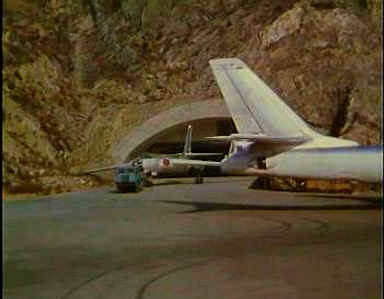 The Air Force
recently built protective hangars
for its fighters at Kadena (above), although they are not nearly as effective of
the aircraft bunkers built by China. A U.S. Army Patriot anti-aircraft battery
was added a few years back, but further steps are required, such as air raid shelters and wartime food
stocks for the entire island. Ideally, several thousand Japanese soldiers (or
perhaps a new Okinawan National Guard) could occupy a base that U.S. Marines
will abandon in order to boost island security.
The Air Force
recently built protective hangars
for its fighters at Kadena (above), although they are not nearly as effective of
the aircraft bunkers built by China. A U.S. Army Patriot anti-aircraft battery
was added a few years back, but further steps are required, such as air raid shelters and wartime food
stocks for the entire island. Ideally, several thousand Japanese soldiers (or
perhaps a new Okinawan National Guard) could occupy a base that U.S. Marines
will abandon in order to boost island security.
The remaining Marines must return to the role they played in the first year of World War II when Marine Defense battalions provided base defense from attacking aircraft, enemy commandos, saboteurs, and surprise assaults by paratroopers. This would require new equipment, like low-level anti-aircraft weaponry. Ironically, the Corps' only anti-aircraft unit on Okinawa was deactivated in 2007.
Downsize Kadena
Kadena is a strategic base, but a vulnerable base that our Generals must reclassify as a forward operating base. They must dismiss the notion that our bases on Okinawa are a great place to raise a family. History shows that war can suddenly erupt over petty squabbles. Recall the 2001 incident in which a U.S. Navy EP-3 reconnaissance aircraft was forced to land in China after bumping a Chinese fighter, causing it to crash. Some American leaders called for military action, but cooler heads prevailed. More recently, China's aggressive rhetoric about territorial limits in the South China sea sparked confrontations with the Philippines.
This modest proposal would only remove 22 of the 101 aircraft from Kadena, while adding a dozen Marine aircraft from Futenma. Only 2000 of 8000 airmen at Kadena would depart, half as the tanker and AWACS squadrons, plus the Special Operations Group, reposition. The other half leave from base support activities as the number of family members are cut in half. This would allow the promised closure of Marine Corps Camps Foster and Kinser since displaced Marine families could move onto Kadena. A squadron of Marine aircraft from a closing Futenma airbase could move up the road to use vacated space at Kadena. All this could be accomplished within a four years at little cost.
These actions combined with the current promise to remove a few thousand Marines allows a reduction of the American presence on Okinawa from 28,000 military personnel to around 16,000, and a decrease in accompanied family members from 22,000 to around 10,000, thus increasing wartime readiness while eliminating friction with Okinawans and thwarting China's hope that all bases may be closed after the current Okinawa base crisis explodes into riots.
Perhaps its best to do nothing, and allow tensions with the Japan and the Okinawans rise to the point where all American bases on Okinawa are ordered closed. From a military standpoint, that is far better than the current situation in which 30,000 American civilians live in a potential war zone with two dozen large aircraft parked in rows for easy destruction. Hopefully, this modest proposal to downsize Kadena by removing half the Air Force family members and 22 large support aircraft will gain acceptance and finally resolve a serious political problem with our key ally.
Carlton Meyer editorG2mil@Gmail.com
©2012 www.G2mil.com
February 2017 Update
Has China Been Practicing Preemptive Missile Strikes Against U.S. Bases?
March 2017 Update
Chinese missile-test sites appear to mirror US bases in Japan
"Other defense experts have aired concerns about missile threats. A 2015 RAND Corp. report estimated that by this year, China would have acquired enough missiles to stop U.S. fighters flying out of Kadena on Okinawa for up to 43 days during a conflict in Taiwan.
“Kadena is like a sitting duck susceptible to missile attacks from the Chinese,” Martin Schulz, a senior research fellow at the Fujitsu Research Institute, told the Foreign Correspondents’ Club of Japan in November. “We should disperse our forces in Asia and out of Okinawa.”"
July 2017 Update
Missile Strikes on US Bases in Asia - China's real threat to America
“The greatest military threat to U.S. vital interests in Asia may be one that has received somewhat less attention: the growing capability of China’s missile forces to threaten U.S. bases in the region,” write Thomas Shugart and Javier Gonzalez in a report released last month by the Center for a New American Security (CNAS)."